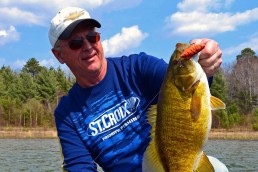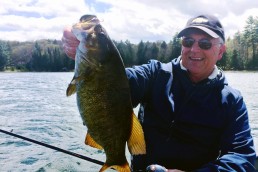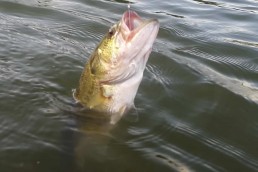Early Pre-spawn Bass Crankbait fishing
SHARE THIS POST
Truly one of my favorite times to fish for big bass is in the early pre-spawn. I’m talking about that time noticeably before they head shallow and begin building beds. Generally this means main lake, river or reservoir water temps near the 50 degree mark and below. In fact, while some spring anglers anxiously seek out warmer waters and early signs of bedding bass, I usually stick with cold water and deeper schools of staging fish. No doubt, these deeper staging bass are a bit trickier to locate, but the payoff can be a school of fat-bellied competitive biters.
In Wisconsin, Minnesota and some other Great Lakes states, a mix of both smallies and largemouth often use the same breaklines. In fact, on one cast you might tag a big bronzeback, then pin a lunker largemouth on the next. Plus, walleyes, pike and even a good muskie are bound to be in this mix, as well. Competition between each species can lead to some of the most intense bites you ever experience. Still, the key is to find them and then present a lure they want to eat.
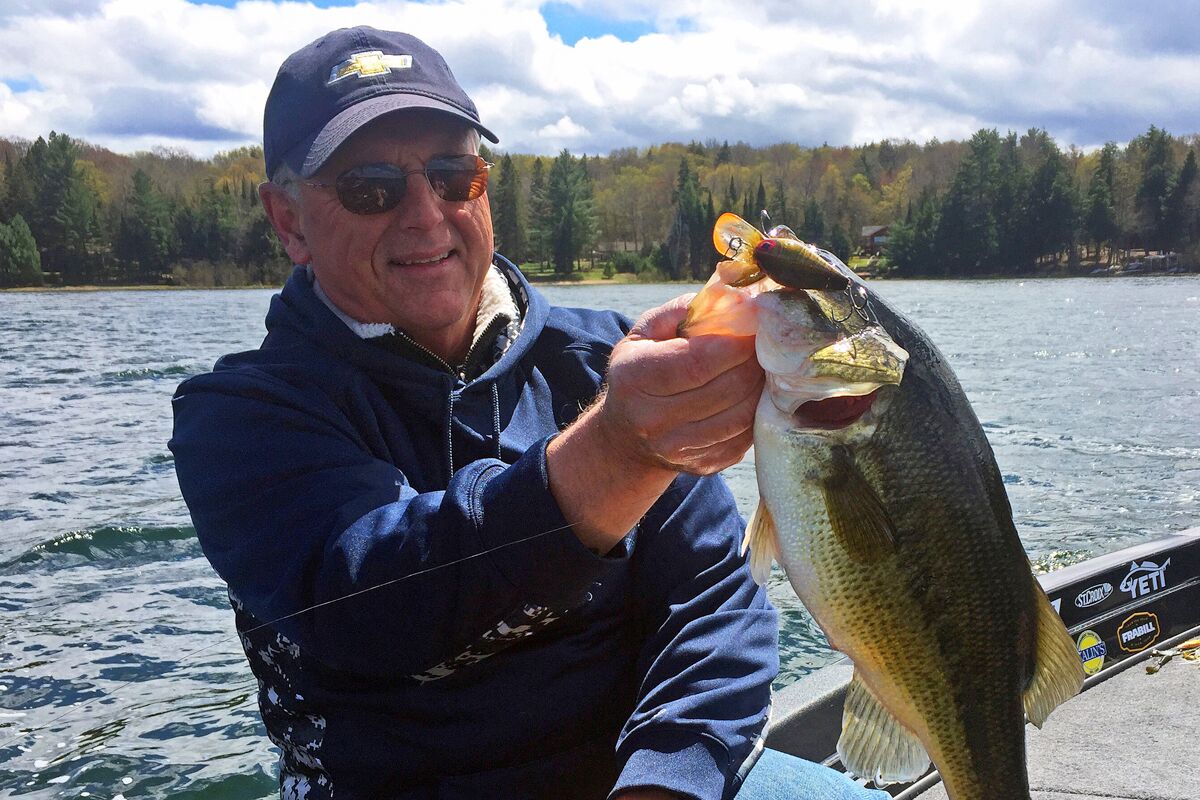
Both smallmouth and largemouth bass are likely to stage on drop-offs, points, and offshore flats with cover just outside good spawning areas. It varies a lot from one lake to the next as to where these early pre-spawn bass stage, but if you find a dominant underwater point, bar or a reef just outside a shallow spawning area, it likely contains a bunch of bass somewhere. Another favorite of mine, particularly for largemouths is a weed flat just outside a known spawning shoreline.
On average, these staging areas are not that deep. On average, the 4- to 7-foot range is the most likely depth, but it might be deeper on really clear waters. Weed flat bass might be even shallower than 4 feet if the water is stained. Several spots predictably can hold early pres-pawn bass. One of my longtime favorites is a large weedy bay positioned on the north end of a lake or reservoir that is mostly 2 to 4 feet deep. It must have plenty of sun and protection from cold northerly winds. If you find a spot like this, the offshore weed flats are sure to hold staging bass.
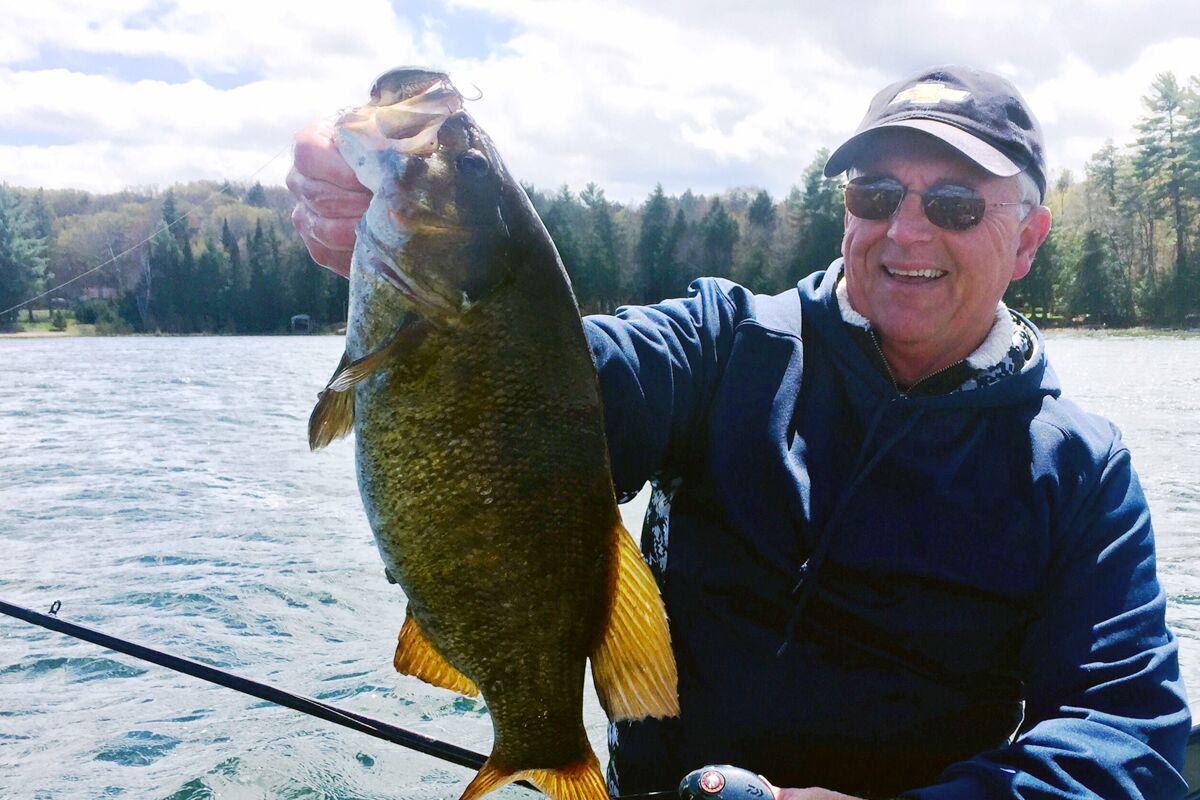
Are you enjoying this post?
You can be among the first to get the latest info on where to go, what to use and how to use it!
Any flat, point or reef is likely to hold the early pre-spawn bass too. In fact, points and reefs positioned just outside shallow swampy bays can be pure dynamite now.
While a host of lures might catch ’em in the pre-spawn, day in and day out nothing rivals a crankbait to cover water and find active bass. Any crankbait in your tacklebox can work if it runs the right depth, and that my friends is paramount. Stick with lures that travel in that 4 to 7 foot range and you will connect with pre-spawn bass. Testing various color patterns on a spot that produces a bass or two might reveal a color or even wobble action preference. On one day, the fish might be all over crawfish patterns, yet the next day—or even an hour later—flashy chrome baitfish-like replicas can draw more response. Quite often, I will refish my favorite spots with a change-up crankbait when action slows. For example, if the initial hot lure was a wide wobbler with a crawfish color pattern, I might re-fish the spot with a tight wiggler in chrome to trigger a few more strikes. In many instances, a different group of fish fires up to this new offering.
Both spinning and baitcasting gear works well for cold water cranks and these deeper pre-spawn bass holding offshore. It all depends upon what combo makes you the most comfortable. Personally, I prefer to rig up with 8 to 12 pound test fluorocarbon on a baitcasting outfit for this style of fishing. The new extra-long, soft-action crankbait sticks that many bass tournament guys use today are excellent choices. The softer parabolic action slows down your hookset reactions and let the bass take in the lure better. At least, that’s the theory. I also think these softer rods put more even pressure on the fish during the battle resulting in less shake-offs during jumps. These specially designed “crankin’ sticks” also allow you to pitch a wider range of baits on baitcasting reels.
Low-stretch braided line in green or tannic colors can work well for early season crankin’ in stained, off-colored waters as long as you fish this line with a soft-action rod. When fishing over thick weed flats, braided line can both rip the lures free of debris as well as muscle bigger fish out of the jungle. But, fluorocarbon and even traditional monofilament line are arguably better when the water is clear. A good way to test which is better is to fish alongside someone casting the opposite line. If they get more bites, it’s a good bet that the line is the difference maker.
The next time you are out on the water on a chilly spring day and no bass are in the shallows, move offshore to a nearby point, reef or even a weed flat and start crankin’. As soon as you hook into that first big bass with this tactic, buckle up! More lunkers are lurking nearby! MWO
Like bass fishing? Check out Joe Bucher’s article on spinnerbait fishing.
MWO
SHARE THIS POST
Did you enjoy this post?
You can be among the first to get the latest info on where to go, what to use and how to use it!
Joe Bucher
Joe Bucher is a Freshwater Fishing Hall of Fame Legendary Angler, book author, lure designer and host of Fishing with Joe Bucher TV series.
